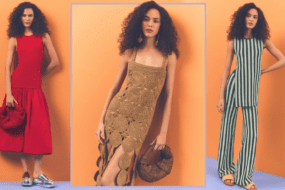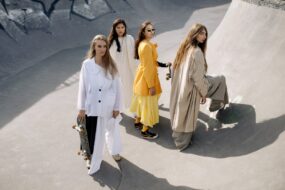
Introduction to the Evolution of Women’s Fashion
Step into a time machine as we embark on a thrilling journey through the ever-evolving world of women’s fashion. From the rebellious flapper styles of the 1920s to the elegant Hollywood glamour of the 1930s, each decade has left its unique mark on how women express themselves through clothing. Join us as we explore iconic trends and timeless classics that have shaped the way women dress for generations to come.
1920s: The Roaring Twenties and the Rise of Flapper Fashion
The 1920s, also known as the Roaring Twenties, was a decade filled with excitement and change in women’s fashion. In this era, the iconic Flapper style emerged as a symbol of liberation and rebellion against traditional norms. The Flappers were bold, independent women who embraced short hemlines, loose silhouettes, and statement accessories like headbands and pearl necklaces.
Flapper fashion represented a shift towards modernity and freedom for women. Gone were the restrictive corsets and long skirts of previous decades – instead, Flappers opted for comfortable yet stylish clothing that allowed them to dance the night away in jazz clubs or socialize at speakeasies during Prohibition.
With their signature bobbed haircuts and daring attitudes, Flappers became synonymous with youthfulness and vitality in the 1920s. Their fashion choices reflected a desire to break away from societal norms and embrace a more carefree lifestyle full of fun and adventure.
1930s: From Glamorous Hollywood Gowns to the Practicality of the Great Depression
The 1930s was a decade of stark contrasts in women’s fashion. On one hand, glamorous Hollywood gowns dazzled on the silver screen, showcasing opulence and luxury. Stars like Jean Harlow and Greta Garbo epitomized this era of elegance with bias-cut silk dresses and fur-trimmed coats.
However, off-screen realities painted a different picture. The Great Depression brought about practicality and simplicity in everyday dressing. Women had to make do with less, opting for more affordable garments that could withstand the challenges of economic hardship.
Despite the challenging times, creativity flourished as designers found ways to marry style with functionality. The silhouette shifted towards softer lines and more tailored cuts, reflecting a blend of sophistication and pragmatism that defined 1930s fashion.
1940s: The Influence of World War II on Women’s Clothing
In the 1940s, the impact of World War II on women’s fashion was profound. With resources redirected to the war effort, clothing became more utilitarian and practical. Fabrics were rationed, leading to shorter hemlines and slimmer silhouettes as a way to conserve material.
Women embraced a more simplistic style, with tailored suits becoming popular for everyday wear. The iconic “victory rolls” hairstyle emerged as a symbol of resilience amidst wartime challenges.
Functional elements like pockets and belts became essential features in women’s clothing during this era. Women found ways to adapt their wardrobes to suit the demands of wartime life without sacrificing style or elegance.
Despite the limitations imposed by war rationing, creativity flourished in reusing and refashioning existing garments. Women displayed resourcefulness by making do with what they had while still expressing individuality through accessories like bold scarves and brooches.
The 1940s marked a period of innovation driven by necessity, where women’s fashion reflected not only the constraints of wartime but also their unwavering spirit and adaptability in challenging times.
1950s: The Return of Femininity with Full Skirts and Cinched Waists
The 1950s marked a significant shift in women’s fashion, as the silhouette once again embraced femininity with full skirts and cinched waists. This era brought back a sense of glamour and elegance, with designs that accentuated the female form in a tasteful manner. The styles of the 1950s continue to influence modern fashion trends, showcasing the enduring appeal of classic looks from this iconic decade. As we look back at the evolution of women’s fashion through the decades, it is clear that each era has made its unique mark on style, reflecting the cultural influences and societal changes of the time. From flapper dresses to Hollywood gowns to utility clothing influenced by wartime needs, women’s fashion has truly evolved in remarkable ways over the years. It is fascinating to see how trends have come full circle and how history continues to inspire contemporary designers in creating innovative and timeless pieces for today’s modern woman. Fashion will always be a reflection of society, evolving with each passing decade while also paying homage to its rich heritage.






















